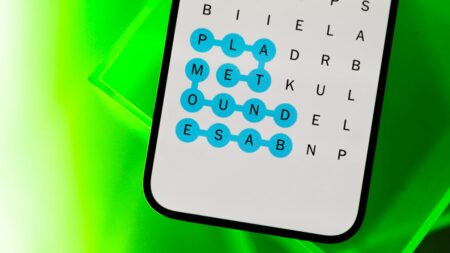Elon Musk’s xAI announced its latest artificial intelligence flagship model, Grok 3, on Monday. The company also announced Grok 3 mini, a scaled-back version, plus the addition of DeepSearch, a new tool that the company calls a next-generation search engine. xAI has added new functionality for Grok 3 web and mobile apps and a subscription service specifically for Grok users, dubbed SuperGrok.
“We’re very excited to present Grok 3, which is, we think, an order of magnitude more capable than Grok 2 in a very short period of time,” Musk said during xAI’s livestream on X. Grok 3 was trained on 200,000 Nvidia H100 GPUs, which is double that of Grok 2. The team said it took 92 days to expand its Memphis-based supercomputer, dubbed Colossus, to accommodate training for Grok 3.
Musk said during the presentation that Grok 3 boasts 15 times more computer power than Grok 2, though in a previous X post, he said 10 times more. The model was trained on information ranging from user posts on X to court documents.
Grok 3 faces stiff competition from OpenAI, Google and Anthropic, all of which have released new AI models already in 2025 or are planning to do so.
Google Gemini 2.0 added useful functionality earlier in February, while OpenAI plans to unify all its AI models when GPT-5 launches sometime later in 2025. Meanwhile, Anthropic’s next new AI model could be weeks away.
How to try Grok 3
Grok 3 is rolling out to X Premium Plus members starting on Feb. 18, and they will have exclusive access for now, including access to DeepSearch. It’s a small win for these users, as X recently increased the price of Premium Plus from $16 to $22.
Eventually, xAI will launch SuperGrok, a subscription service specifically for Grok 3 that will include DeepSearch, higher image generation limits and access to Grok 3 mini features like Think. Prices were not shown during the presentation.
Benchmark tests comparing Grok 3 and Grok 3 mini to the competition.
‘Scary smart’
“Grok 3 has very powerful reasoning capabilities,” Musk said during a Feb. 13 interview with CNBC. “In the tests that we’ve done thus far, Grok 3 is outperforming anything that’s been released that we’re aware of. At times, I think Grok 3 is kind of scary smart.”
Of course, there’s no way to test Grok 3’s capabilities yet. And the team mentioned that Grok may answer with what it believes is the truth — there was otherwise no mention of Grok 2’s penchant for outputting hallucinations or how often Grok 3 will do so.
Grok 3 is shown conducting a DeepSearch about SpaceX’s next Starship launch.
DeepSearch
In addition to Grok 3, the xAI team announced DeepSearch, described as the first generation of Grok 3 agents that allow users to ask questions and receive answers. It’s referred to in the livestream as a “next-generation search engine.”
OpenAI and Google have similar agent-based searches. Both are called Deep Research.
DeepSearch shows users the individual steps Grok 3 goes through, from thinking about the question to research and then finally the answer. The demo took around a minute and included 15 X posts and 32 web pages as references.
Another feature of DeepSearch is the ability to view Grok 3’s reasoning. After asking one question about March Madness, the team used the feature to show how Grok 3 came to its conclusions.
“Probably, I should look at team rankings, their performance during the regular season, any injuries or key player statuses, and maybe some historical data on how they perform in tournaments,” Grok 3 revealed when asked.
This follows Chinese AI company DeepSeek — which launched its platforms in January — including the reasoning process while answering queries.
Grok 3 conducting a DeepSearch about SpaceX’s next Starship launch.
Grok vs. competitors
Grok is not alone, and one expert told CNET it may have some catching up to do.
“While high-ranking benchmark results are impressive, it says more about the general movement towards models with reasoning capabilities — or agentic AI — than it does about the individual competitiveness of models,” said Paul Schell, industry analyst for ABI Research. “We take into consideration the broader go-to-market, which encompasses the marketing strategy as well as partnerships that model builders have forged. Here, Anthropic and OpenAI are ahead of Grok.”
One difference between Grok and competitors, Schell sais, is that “Grok 3’s DeepSearch readily accesses real-time information from the internet, unlike OpenAI’s deep research product.”
But he also notes that OpenAI’s product “appears to go into more depth,” when searching, taking up to 30 minutes to complete a task.
Read the full article here
















